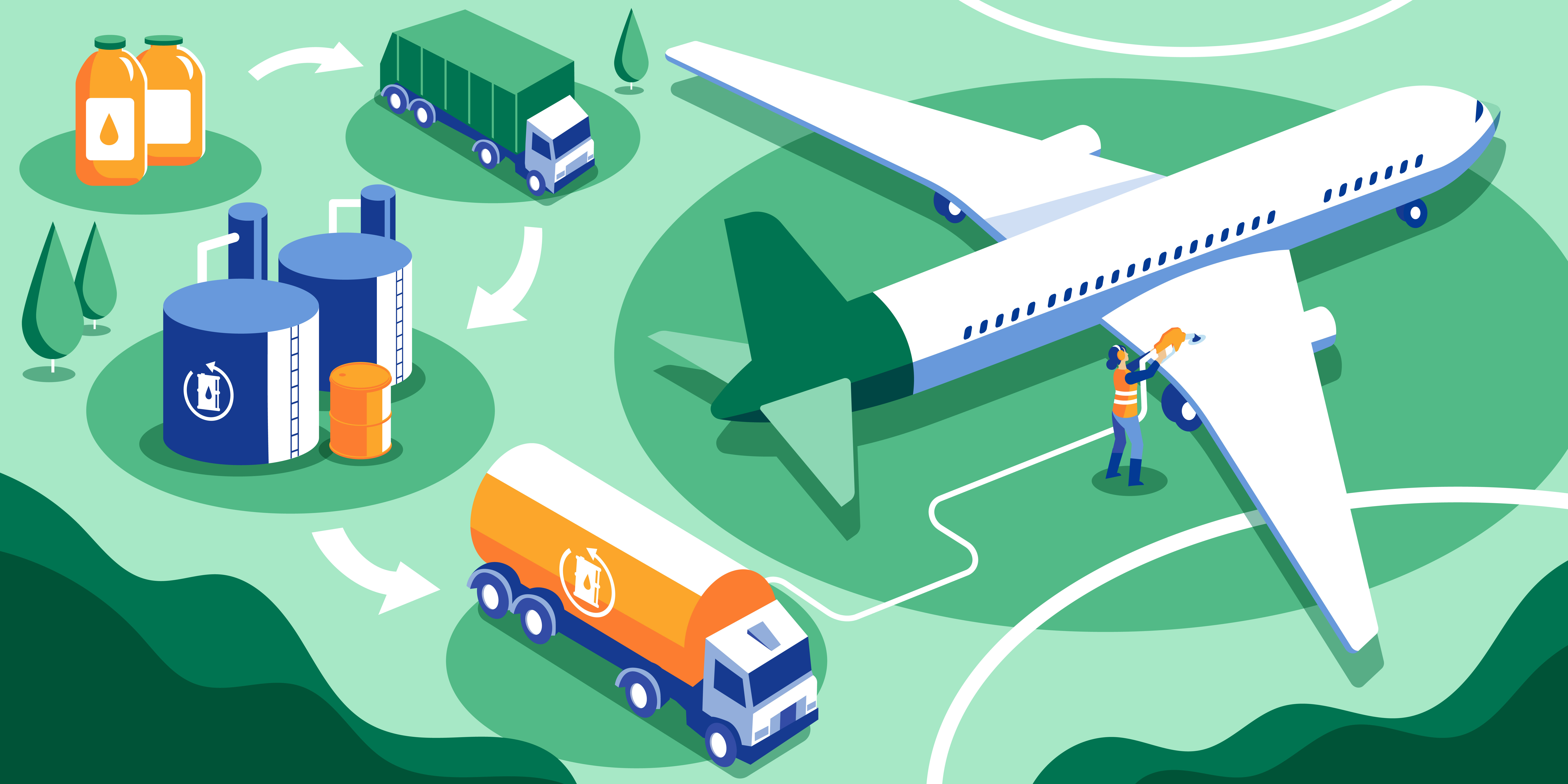
Aviation
4 minute read
Offsetting and sustainable aviation fuel: two ways to mitigate the climate impact of air travel
Air travel is back at pre-pandemic levels and expected to keep growing. This makes it even more important to act on reducing aviation emissions. Options are emerging to enable flying with a clearer conscience – but what does the tick box “offset” mean when booking a flight, and are there ways to directly reduce the emissions produced by air travel?
“First avoid emissions by flying less when possible, second minimize emissions from the flights you still take, and then finally offset, i.e. compensate, the emissions left. That’s a model we could, and should, all follow,” says Quentin Gauthier, Head of Sustainability Assessment at Neste, the global leader in producing sustainable aviation fuel (SAF) and renewable diesel.
The first part of the model, avoiding air travel where you can, is quite easy to grasp. But what about minimizing and offsetting emissions in a hard-to-abate sector such as aviation, which currently accounts for around 2 to 3% of global carbon dioxide emissions? A number that is forecasted to substantially grow over the coming decades if no action is taken.
Carbon offsetting – what and how?
As a solution, many airlines and other companies now offer passengers the opportunity to purchase carbon offsets to mitigate the climate impact of flying. But how do these offsets make your flight more sustainable?
By ticking the “carbon offset” box you are financially supporting projects that help combat climate change by either preventing additional CO2 from getting into the atmosphere, or removing carbon dioxide directly from the air. One example is investing in forest preservation, which either ensures trees are maintained in a particular area or that new trees are planted to draw in carbon dioxide from the atmosphere.
Quentin Gauthier explains further: "Carbon offset credits represent one ton of CO2 avoided or removed from the atmosphere as a result of a project or intervention. Carbon credits are traded in a marketplace for companies and individuals to compensate for their greenhouse gas emissions occurring elsewhere.”
Certification is available by organizations such as The Gold Standard to verify the accuracy and efficiency of a carbon offsetting scheme – it is essential to ensure that the offsets you are buying meet such industry best practices. “Offsetting emissions and its implications deserve more transparency” says Gauthier and points out that while offsetting is useful, it shouldn’t replace direct reductions in emissions.
“We as Neste like to say that all solutions are needed,” says Gauthier. “That means not just using carbon offsets – which don’t directly influence the carbon impact of flying, but can only compensate for the impact elsewhere – but finding better options that can alleviate the impact on our environment.”

Reducing emissions – what and how?
One such solution to reduce air travel related emissions, available today, is sustainable aviation fuel (SAF). It’s a direct replacement for fossil jet fuel and reduces greenhouse gas (GHG) emissions by up to 80%* over the fuel’s life cycle compared to using fossil jet fuel. SAF is made from renewable raw materials, such as wastes and residues including used cooking oils.
The huge increase in Neste’s SAF production capability with the expansion of their renewables refineries in Singapore and the Netherlands, will help respond to increasing demand and boost the availability of SAF as a key solution to significantly cut aviation emissions.
Gauthier stresses that when it comes to making travel more sustainable, there is a wide landscape of solutions to consider but it is important to think about the actual impact and credibility. It’s currently economically more efficient to purchase carbon offsets than to spend the equivalent amount in buying SAF, but using SAF actually limits the carbon impact of flying – as opposed to mitigating it, and supports improvement for the whole industry.
With the need to limit the global temperature increase to 1.5C in mind, Gauthier says: “The end goal is clear. And making air travel more sustainable, using all available solutions, will be key in reaching that goal.”
By integrating more sustainable practices into their operations, companies can take climate action and significantly reduce their carbon footprint. For example, companies can credibly reduce their aviation emissions by purchasing SAF through solutions such as Neste Impact. However, the responsibility doesn't rest on companies alone; individual business and leisure travelers also have a significant role to play in reducing the carbon emissions of their air travel.
So when booking your next flight, be sure to check what options are available to reduce the emissions of your flight. More and more airlines are using SAF and may even offer the option to buy SAF for your flight.
“Choosing the offset option when booking a flight is good, but reducing your emissions with SAF is better," concludes Gauthier.
*) When used in neat form (i.e. unblended) and calculated with established life cycle assessment (LCA) methodologies, such as CORSIA methodology
Credits: Chris Stokel-Walker, author, speaker and journalist whose work has appeared in BBC News, The New York Times and WIRED UK.





